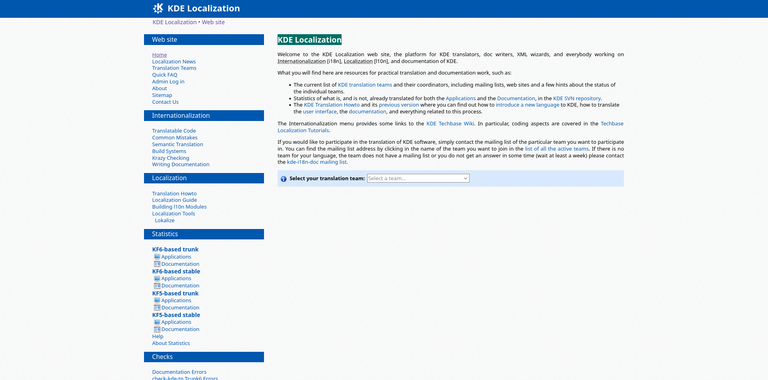
Weblate 5.13 comes with cherry-picking mode
Weblate makes software translation a breeze and is vastly superior to offline solutions such as KDE's. With the new version 5.13, localisation operators can selectively integrate submitted translations depending on their status.
Weblate is the free alternative to the much better known Transifex, which is fortunately becoming more and more popular. Users can simply log in, select the project they want and start translating. This is a far cry from the antiquated approach that KDE and other projects unfortunately still pursue: translating locally and then somehow integrating it afterwards – involving ‘reservations’, exorbitantly long guidelines, mailing lists and a lot of back and forth. The KDE Localisation website is a prime example of this:
Interested parties are first confronted with 14 links in the main area – many of which, as you might expect, lead to pages with even more links. Or to mailing lists – who doesn't love them? On top of that, there are all the links in the sidebar (desktop view).
In other words, volunteers who just want to contribute a quick translation are first forced to undertake a short study and sent into a Kafkaesque labyrinth of multiple link levels. Only God knows how much potential is wasted as a result. But back to Weblate.
Weblate & cherry-picking
Weblate 5.13 now offers selective merging, allowing you to integrate only translations that have already been reviewed or that do not carry a ‘needing edit’ flag.
Weblate describes the new commit policy as follows:
The biggest introduction is the new commit policy. Repo maintainers and other responsible people can now decide if they want to receive all translations from Weblate, omit those in the state Needing edit, or only receive the Approved in review. Feedback and suggestions on how to make this even more helpful are welcome in discussions or as direct issues.
This gives maintainers greater flexibility and new opportunities: for example, young projects could initially integrate everything that isn't nailed down in order to achieve parity with the English source text as quickly as possible. Once this has been achieved, the focus could easily be shifted towards quality by only allowing approved translations (Approved in review).
Under the hood
... the switch to the latest version of the Bootstrap framework is currently taking place.
This is not yet complete, but paves the way for new features in the graphical user interface.
It will still take a few more versions to deliver some eye-catching features, but we are working hard to make them possible; we changed much of what’s behind the curtains. Part of Weblate is already on the newest version of the Bootstrap framework. This portion will gradually increase and will enable grand UI features once finished. This time, it’s just a few adjustments for better visibility in the dark theme.
Translation memory
Starting with Weblate 5.13, entries can have the status active and pending and can be automatically cleaned up:
Translation memory entries can have two different statuses: active and pending. Pending entries are included in suggestions, but with a quality penalty applied. If Autoclean translation memory is enabled, stale and obsolete entries with pending status are automatically removed when a translation is approved.
Welcome aboard
Weblate welcomes new developers Karen and Kartik, whose first contributions have been included in this release.
We published an exciting release today. It is the first one that includes the work done by new Weblate team members, namely Karen on the frontend and Kartik on the backend. We are excited to have them on our team.
All new features can be viewed in the detailed changelog.
s3n🧩net wishes great fun with your easy translations


















Comments